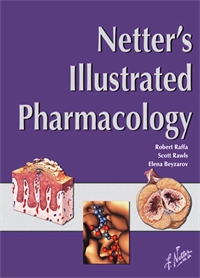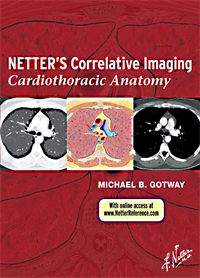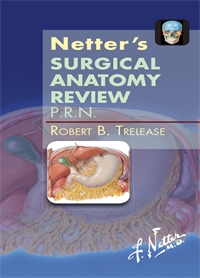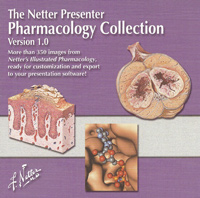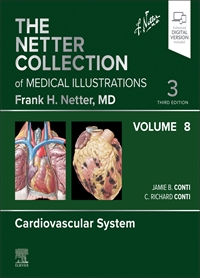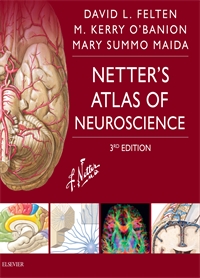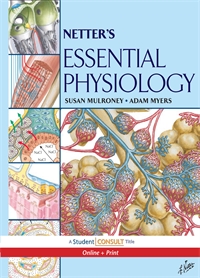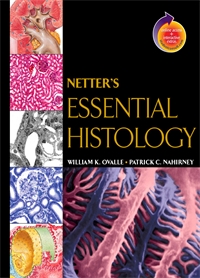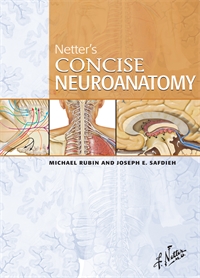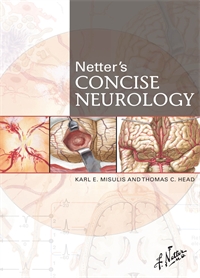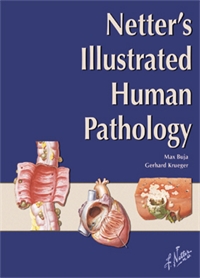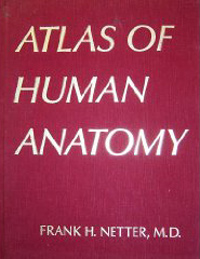Pharmacology - Raffa 1E
Author: Robert B. Raffa, PhD, Scott M. Rawls and Elena Portyansky
ISBN: 9781929007608
- Page 2: Eliminate External and Internal Threats
- Page 3: Eliminate External and Internal Threats
- Page 4: Replenish or Neutralize Endogenous Chemicals
- Page 5: Modulate Physiologic Processes
- Page 6: Chemical Transmission at the Synapse
- Page 7: Synapse Morphology
- Page 8: Receptors and Signaling
- Page 9: Receptor Subtypes
- Page 10: Agonists
- Page 11: Antagonists
- Page 12: Stereochemistry and 3-Dimensional Fit
- Page 13: Receptor-Effector Coupling
- Page 14: Signal Transduction and Crosstalk
- Page 15: Second-Messenger Pathways
- Page 16: Ligand-Gated Ion Channels
- Page 17: G Protein-Coupled Receptors
- Page 18: TRK Receptors
- Page 19: Nuclear Receptors
- Page 20: Up-Regulation and Down-Regulation of Receptors
- Page 21: Dose-Reponse Curves
- Page 22: Potency
- Page 22: Efficacy
- Page 23: Inverse Agonists
- Page 24: Antagonists: Surmountable (Reversible) and Nonsurmountable (Irreversible)
- Page 25: Route of Administration
- Page 26: First-Pass Effect
- Page 27: Membrane Transport
- Page 28: Distribution
- Page 29: Barriers
- Page 30: Metabolism (Biotransformation) of Drugs
- Page 31: Cytochrome P-450 (CYP450)
- Page 32: Metabolic Enzyme Induction and Inhibition
- Page 33: Elimination
- Page 36: Organization of the Nervous System
- Page 38: Interface of the Central and Peripheral Nervous Systems and Organization of the Somatic Division
- Page 39: Neuromuscular Transmission
- Page 40: Nicotinic Acetylcholine Receptor
- Page 41: Physiology of the Neuromuscular Junction
- Page 43: Mechanism of Action of Acetylcholinesterase Inhibitors
- Page 44: Neuromuscular Blocking Agents: Nondepolarizing and Depolarizing
- Page 45: Autonomic Nervous System-Schema
- Page 46: Sympathetic Fight or Flight Response
- Page 47: Cholinergic and Adrenergic Synapses
- Page 48: Example of Cholinergic and Adrenergic Drug Treatment: Glaucoma
- Page 49: Cholinergic Receptors
- Page 50: Cholinergic Drugs
- Page 51: Cholinergic Drugs
- Page 52: Example of Cholinergic Drug Treatment: Myasthenia Gravis
- Page 53: Adrenergic Receptors
- Page 54: Adrenergic Drugs
- Page 56: Drug Side Effects
- Page 58: Development of the Nervous System
- Page 59: Anatomy of the Nervous System
- Page 60: Functional Correlations and Visualization of Brain Structures
- Page 61: Resting Membrane and Action Potentials
- Page 62: Excitatory and Inhibitory Postsynaptic Potentials
- Page 63: Central Nervous System Neurotransmitters, Receptors, and Drug Targets
- Page 64: GABAA Receptor Complex and Sedative-Hypnotic Drugs
- Page 65: Clinical Anxiety
- Page 66: Anxiolytic Agents
- Page 67: Causes of Seizures and Their Treatment
- Page 68: Epilepsy: Generalized Seizures anad Status Epilepticus
- Page 69: Epilepsy: Partial and Absence Seizures
- Page 70: Epilepsy: Partial and Absence Seizures
- Page 71: Clinical Depression
- Page 72: Antidepressants: Mechanisms of Action
- Page 73: Bipolar Disorder and Complusive Behavior
- Page 74: Phychosis and Dopamine Pathways
- Page 75: Motor Tracts, Basal Ganglia, and Dopamine Pathways
- Page 76: Motor Tracts, Basal Ganglia, and Dopamine Pathways
- Page 77: Parkinsonism: Symptoms and Defect
- Page 78: Parkinsonism: Levodopa, Carbidopa, and Other Drugs
- Page 79: Huntington Disease and Tourette Syndrome
- Page 80: Alzheimer Disease: Symptoms, Course and Pathology
- Page 81: Alzheimer Disease: Cholinergic Involvement and Drugs
- Page 82: Alzheimer Disease: Cholinergic Involvement and Drugs
- Page 83: Stroke: Symptoms and Drug Treatmtent
- Page 84: Motor Neurons and Drugs
- Page 85: Pain Pathways
- Page 86: Local Anesthetics: Spinal Afferents and Local Anesthetic Mechanisms of Action
- Page 87: General Anesthetics: Properties
- Page 88: Opioids: Endogenous Opioid Pathway
- Page 89: Opioids: Receptor-Transduction Mechanisms
- Page 90: Nonopioids: NSAIDs, Selective Cyclooxygenase-2 Inhibitors, and Acetaminophen
- Page 91: Sumatriptans and Reuptake Inhibitors
- Page 94: Cardiovascular Function: Anatomy
- Page 95: Cardiovascular Function: Definition of Terms and Regulation
- Page 96: Role of Catecholamines in Heart Function
- Page 97: Sympathetic and Parasympathetic Regulation of Heart Function
- Page 98: Synthesis and Storage of Catecholamines
- Page 99: Regulation of Norepinephrine Release
- Page 100: Inactivation of Norepinephrine
- Page 101: Hypercholestoerolemia: Causes
- Page 102: Hypercholestoerolemia: Pharmacologic Therapy
- Page 103: Angina Overview
- Page 104: Nitrates for Angina Treatment: Classes, Administration Routes, Pharmacology, and Adverse Effects
- Page 105: Nitroglycerin in Angina Treatment
- Page 106: Nitroglycerin: Mechanism of Action
- Page 107: Calcium Channel Antagonists
- Page 109: Heart Failure Overview
- Page 110: Heart Failure: Treatment
- Page 111: Heart Failure Treatment: β-adrenergic Stimulators and Blockers
- Page 112: Heart Failure Treatment: Cardiac Glycosides
- Page 113: Cardiac Arrhythmias: General
- Page 114: Cardiac Arrhythmias: General
- Page 117: Cardiac Arrhythmias: Drug Classification
- Page 118: Hypertension Overview
- Page 119: Hypertension: Causes
- Page 120: Hypertension Treatment: Diuretics
- Page 121: Hypertension Treatment: Angiotensin-Converting Enzyme Inhibitors
- Page 122: Hypertension Treatment: Beta and Alpha Blockers
- Page 123: Hypertension Treatment: Minoxidil
- Page 124: Hypertension Treatment: Clonidine
- Page 125: Hypertension in Elderly Patients
- Page 126: Pheochromocytoma-Induced Hypertension
- Page 127: Hypertension in Cushing Syndrome
- Page 128: Peripheral Vascular Disease
- Page 130: Regulation of Hypothalamic and Pituitary Hormones
- Page 131: Regulation of Hypothalamic and Pituitary Hormones
- Page 132: Hypopituitarism
- Page 133: Growth Hormone Deficiency and Treatment
- Page 134: Growth Hormone Excess (Acromegaly) and Treatment
- Page 135: Thyroid Hormones
- Page 136: Thyroid Hormones: Synthesis, Release, and Regulation
- Page 137: Hypothyroidism
- Page 138: Hypothyroidism: Treatment of Choice
- Page 139: Liothyronine, and T4/T3 Combinations
- Page 140: Hyperthyroidism
- Page 141: Hyperthyroidism: Treatment
- Page 142: Thioamides
- Page 143: Thioamides: Adverse Effects
- Page 144: Radioactive Iodine
- Page 145: Iodide
- Page 146: Adrenergic Antagonists
- Page 147: Regulation of Adrenal Hormone
- Page 148: Mineralcorticoids and Glucocortocoids
- Page 149: Corticosteroids
- Page 150: Cushing Syndrome
- Page 151: Ketoconazole
- Page 152: Metyrapone
- Page 153: Aminoglutethimide
- Page 154: Addison's Disease, or Primary Adrenal Insufficiency
- Page 155: The Pancrease and Insulin Production
- Page 156: Insulin Secretion
- Page 157: Lack of Insulin
- Page 158: Type 1 Diabetes Mellitus
- Page 159: Type 2 Diabetes
- Page 160: Insulin Therapy
- Page 161: Reactions to Insulin: Hypoglycemia and Adipose Tissue Changes
- Page 162: Sulfonylureas
- Page 163: Biguanides
- Page 164: Meglitinides
- Page 165: Alpha-Glucosidase Inhibitors
- Page 166: Thiazolidinediones
- Page 167: Thiazolidinediones: Clinical Rationale and Adverse Effects
- Page 170: Enteric Nervous System
- Page 171: Integration of Autonomic and Enteric Nervous System
- Page 172: Gastrointestinal Motility
- Page 173: Gastrointestinal Motility
- Page 174: Control of Peristalsis
- Page 175: Hormones of Gastrointestinal Tract
- Page 176: Parietal Cell Function Regulation
- Page 177: Pancreatic Secretion
- Page 178: Defecation
- Page 179: Protein Digestion
- Page 180: Fat Digestion
- Page 181: Colonic Motility and Treatment of Diarrhea
- Page 182: Antidiarrheal Drugs and Their Adverse Effects
- Page 183: Causes of Constipation
- Page 184: Treatment of Constipation
- Page 185: Treatment of Irritable Bowel Syndrome (IBS)
- Page 187: Giardiasis
- Page 188: Helicobacter Pylori Infection Overview
- Page 189: Treatment of Helicobacter Pylori Infection
- Page 190: Peptic Ulcer Treatment
- Page 191: Gastroesophageal Reflux Disease
- Page 192: Gastroesophageal Reflux Disease Treatment
- Page 193: Treatment of Pancreatis
- Page 194: Treatment of Pancreatis
- Page 195: Pathologic Features of Gallstones
- Page 196: Gallstone Pathogenesis and Treatment
- Page 197: Liver Function
- Page 198: Bilirubin Production and Excretion
- Page 199: Cirrhosis
- Page 200: Ascites
- Page 201: Ascites
- Page 202: Physiology of Emesis
- Page 204: Antiemetics
- Page 206: Respiration Overview
- Page 207: Respiratory Diseases
- Page 208: Allergy
- Page 209: Leukocyte Function
- Page 210: Allergic Rhinitis
- Page 211: Introduction to Asthma
- Page 212: Extrinsic And Intrinsic Asthma
- Page 213: Extrinsic And Intrinsic Asthma
- Page 214: Asthma Pharmacology
- Page 215: Anti-IgE Antibodies
- Page 216: Mast Cell Degranulation Blockers
- Page 217: Bronchodilators
- Page 218: Methylxanthines
- Page 219: Methylxanthines: Adverse Effects
- Page 220: Beta-Adrenergic Agonists
- Page 221: Nonselective Beta-Adrenergic Agonists
- Page 222: Selective β2-Adrenergic Agonists
- Page 223: Antimuscarinic Antagonists
- Page 224: Corticosteroids
- Page 225: Corticosteriods: Clinical Uses
- Page 226: Corticosteriods: Adverse Effects
- Page 227: Leukotrienes
- Page 228: Leukotriene Antagonists
- Page 229: Cough
- Page 230: Cough Suppressants (Antitussive Agents)
- Page 231: Chronic Obstructive Pulmonary Disease
- Page 232: Emphysema
- Page 233: Emphysema Causes
- Page 234: Inherited Emphysema
- Page 235: Chronic Bronchitis
- Page 236: COPD General Treatment Measures
- Page 237: COPD Specific Drug Treatments
- Page 238: Restrictive Pulmonary Disease
- Page 239: Pneumonia Overview
- Page 241: Viral Pneumonia
- Page 242: Viral Pneumonia
- Page 243: Bacterial Pneumonia
- Page 246: Organization of the Reproductive System
- Page 247: Regulation of Estrogen and Testosterone
- Page 248: Events of the Normal Menstrual Cycle
- Page 249: Combination Oral Contraceptives
- Page 250: Major Adverse Effects of Combination Oral Contraceptives
- Page 251: Estrogen and Coagulation
- Page 252: Progestin-Only Contraceptives
- Page 253: The Morning-After Pill
- Page 254: The Abortion Pill
- Page 255: Endometriosis
- Page 256: Danazol
- Page 257: Gonadotropin-Releasing Hormone Agonists, Combination Oral Contraceptives, and Progestin
- Page 258: Estrogen Decline
- Page 259: Vasomotor Symptoms
- Page 260: Genitourinary Atrophy
- Page 261: Osteoporosis and Estrogen
- Page 262: Role of Progestins in Hormone Replacement Therapy
- Page 263: Route of Hormone Administration
- Page 264: General Adverse Effects
- Page 265: Cardiovascular and Neurologic Risks
- Page 266: Cancer Risks
- Page 267: Selective Estrogen Receptor Modulators
- Page 268: Antiestrogens
- Page 269: Hypogonadism
- Page 270: Hypogonadism Treatment and Adverse Effects
- Page 272: Microscopic Anatomy
- Page 273: The Nephron
- Page 274: Blood Vessels Surrounding Nephrons
- Page 275: The Glomerulus
- Page 276: Practical Application: Measuring the Glomerular Filtration Rate
- Page 277: Tubular Segments
- Page 278: Ion and Water Reabsorption
- Page 279: Bicarbonate Reabsorption
- Page 280: Potassium Excretion
- Page 281: Antidiuretic Hormone
- Page 282: Renin-Angiotensin-Aldosterone System
- Page 283: General Considerations: Volume Homeostasis
- Page 284: General Considerations: Volume Homeostasis
- Page 285: Mercurial Diuretics
- Page 286: Carbonic Anhydrase Inhibitors
- Page 287: Thiazide Diuretics
- Page 288: Potassium-Sparing Agents
- Page 289: Loop (High-Ceiling) Diuretics
- Page 290: Osmotic Agents
- Page 291: Summary of Therapeutics
- Page 293: Urinary Incontinence
- Page 294: Urinary Tract Calculi (Kidney Stones)
- Page 295: Effect of Renal Insufficiency on Drug Action
- Page 296: Effect of hemodialysis
- Page 298: Classification of Antibiotics
- Page 301: Mechanism of resistance
- Page 302: Examples of Resistance
- Page 303: Natural Penicillins: Penicillin G and Penicillin V
- Page 304: Aminopenicillins: Amoxicillin and Ampicillin
- Page 305: Antipsuedomonal Penicillins
- Page 306: Beta-lactamase Inhibitors
- Page 307: Beta-lactamase Resistant Penicillins: Cloxacillin, Dicloxacillin, Oxacillin, and Nafcillin
- Page 308: Adverse Effects of Penicillins
- Page 309: Cephalosporins
- Page 310: Carbapenems: Imipenem-Cilastatin, Ertapenem, and Meropenem
- Page 311: Monobactams: Aztreonam
- Page 312: Vancomycin
- Page 313: Vancomycin Treatment Difficulties: Resistance and Adverse Effects
- Page 314: Tetracyclines
- Page 315: Aminoglycosides
- Page 316: Macrolides: Erythromycin, Azithromycin, and Clarithromycin
- Page 317: Clindamycin
- Page 318: Quinolones
- Page 320: New Generation Quinolones
- Page 322: Linezolid
- Page 323: Sulfaonamides
- Page 324: Nature of Fungal Infections and Therapy
- Page 325: Amphotericin B
- Page 326: Azole Antifungal Agents and Other Antifungal Agents
- Page 327: Nature of Viral Infections
- Page 328: Herpesvirus
- Page 329: Acyclovir and Famciclovir
- Page 330: Ganciclovir
- Page 331: Influenza and Its Treatment
- Page 332: HIV Infection
- Page 333: Nucleoside Reverse Transcriptase Inhibitors (NRTIs) and Non-NRTIs
- Page 334: Protease Inhibitors
- Page 335: Other Antiretrovial Agents for AIDS: Tenofovir and Enfuvirtide
- Page 338: Cell Cycle
- Page 339: Combination Chemotherapy
- Page 340: Adverse Effects of Chemotherapy
- Page 341: Folate Analogs: Methotrexate
- Page 342: Purine Analogs: Mercaptopurine and Thioguanine
- Page 343: Pyrimidine Analogs: 5-Fluoruoracil
- Page 344: Pyrimidine Analogs: Capecitabine
- Page 345: Pyrimidine Analogs: Cytarabine and Fludarabine
- Page 346: Pyrimidine Analogs: Gemcitabine
- Page 347: Substituted Ureas: Hydroxyurea
- Page 348: Nitrogen Mustards: Mecholorthamine and Melphalan
- Page 349: Cyclophosphamide and Ifosfamide
- Page 350: Nitrosoureas: Carmustine and Lomustine
- Page 351: Platinum Compounds: Cisplatin, Carboplatin, and Oxaliplatin
- Page 352: Vinca Alkaloids: Vincrisitne, Vinblastine, and Vinorelbine
- Page 353: Taxanes
- Page 354: Anthracyclines: Doxorubicin and Daunorubicin
- Page 355: Estrogen Antagonists: Tamoxifen and Toremifene
- Page 356: Aromatase Inhibitors: Anastrozole, Letrozole, and Exemestane
- Page 357: Gonadotropin-Releasing Hormone Agonists: Leuprolide and Goserelin
- Page 358: Antiandrogens: Flutamide, Bicalutamide, and Nilutamide
- Page 359: Unconjugated Antibodies: Trastuzumab, Alemtuzumab, and Rituximab
- Page 360: Conjugated Antibodies: Ibritumomab Tiuxetan and Tositumomab and Iodine I 131 Tositumomab
- Page 361: Imatinib Mesylate
- Page 362: Gefitinib
- Page 363: Bortezomib
- Page 366: Anatomy of the Skin
- Page 367: Alopecia
- Page 368: Bullous (Blister) Skin Diseases
- Page 370: Psoriasis
- Page 371: Scabies and Pediculosis
- Page 374: Deficiency of Vitamin A (Retinol) and Other Fat-Soluble Vitamins
- Page 375: Deficiency of Thiamine (B1) and Other B Vitamins
- Page 376: Niacin or Nicotinic Acid Deficiency (Pellagra)
- Page 377: Vitamin C deficiency (Scurvy)
- Page 378: Fat-Soluable Vitamin-Drug Interactions
- Page 379: Water-Soluable Vitamin-Drug Interactions
- Page 382: Allergic Reactions to Drugs
- Page 383: Type 1 (Acute, Anaphylactic) Reactions
- Page 384: Type 2 (Cytotoxic, Autoimmune) Reactions
- Page 385: Type 3 (Immune Complex, Serum Sickness, Arthus) Reactions
- Page 386: Type 4 (Cell-Mediated, Delayed-Hypersensitivity, Contact Dermatitis) Reactions
- Page 387: Brain Reward Circuit
- Page 388: Ethanol: Deleterious Effects
- Page 389: Ethanol Abuse: Treatment
- Page 390: Withdrawl: Opioids, Benzodiazepams, and Barbiturates
- Page 391: Withdrawl: Opioids, Benzodiazepams, and Barbiturates
- Page 392: Sympathomimetic Drugs
- Page 393: Cholergenic Drugs
- Page 394: Anticholergenic Drugs
- Page 395: Serotonergics
- Page 396: Opioids
- Page 397: Over-the-Counter Products
- Page 398: Management of Poisoning and Overdose
